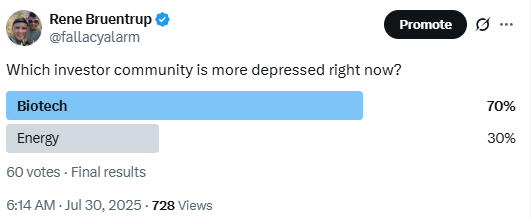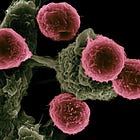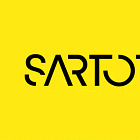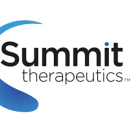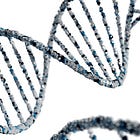Biotech Compendium: Gene Therapy
One of humanity’s boldest technological frontiers. Overlooked by investors, but advancing rapidly and with the potential to lift the entire industry.
What is the Biotech Compendium?
Biotech has always been a boom & bust industry. Right now, it feels like we may be at the end of another long bust. Some names have already been bouncing sharply from their lows.
That makes this the right time to prepare. When biotech comes back into fashion, you’ll want a clear roadmap of the sector, its key players, and the most promising technologies.
This series, the Biotech Compendium, will give you exactly that. Instead of trying to cover everything in a single piece, I’ll release regular deep dives, probably in a cadence similar to my Market Strategy Reports. Taken together, they’ll form a complete overview of one of the most fascinating and potentially lucrative industries.
Today, the first edition starts with biotech’s boldest frontier: gene therapy.
TLDR Summary
Fifty years ago, recombinant DNA set the foundation of the modern biotech industry by allowing us to manipulate the DNA of microbes to use them as drug factories. Gene editing goes a step further. If we can manipulate human genes directly, we could fix ourselves without relying on externally manufactured drugs.
That opens staggering possibilities. Genetic diseases could be cured at their source. Cancer cells could be targeted more effectively by turbocharging immune cells. Resistance against infections could be strengthened. Even lifestyle diseases could be addressed by modifying the human body to deal with them in a better way. Make more insulin or remove more cholesterol. Ageing could be slowed down, perhaps even overcome.
For the longest time, this was more science fiction than actual science. We have had gene editing tools for a while, but they were inflexible, imprecise, hard to handle and expensive. This has changed over the last 10 years. CRISPR-Cas offers a clear roadmap to take the entire biotech industry to the next level.
The first CRISPR therapy has hit the market last year. It serves as an important proof of concept. Additional and more powerful candidates are in the pipelines of various companies, waiting for their GLP-1 moment. One approval can validate an entire class of therapies.
Investors were exuberant about all of this just a few years ago. Now they seem to have completely forgotten about it. The price-to-potential-community-excitement ratio is low. The largest players are trading at just a few billion dollars market cap. Peanuts compared to the juggernauts in hot sectors such as quantum computing and nuclear power.
More recent biotech and healthcare content from Fallacy Alarm
From recombinant DNA…
Cambridge scientists unraveled the double helix structure of DNA in 1953. They realized that it is present in most of our cells and instructs them how to operate, most importantly which molecules to produce and when.
Arguably, proteins are the most important of such molecules. As structural proteins they are our building blocks. As hormones they are used for communication with other cells. And as enzymes they act as catalysts for countless chemical reactions in the body, such as converting nutrients into energy.
By the 1970s, scientists developed their understanding further with the development of recombinant DNA. They learned how to use enzymes as tools to cut microbe DNA and insert new DNA sequences. These microbes were then able to produce molecules to be used as drugs. This breakthrough gave birth to the biotech industry.
The development of recombinant DNA was a powerful commercial catalyst. For example, it allowed the production of synthetic insulin for diabetes, epo for kidney disease and monoclonal antibodies for cancer therapy & autoimmune diseases. All of these are examples of proteins that help carry out important body functions.
Being able to manipulate the DNA of a microbe and change its metabolism leads to a natural follow up question: Can’t we do the same with humans? Why make the drug in a microbe and administer it from outside if we can make the human body produce it directly?
As it turned out, that is indeed possible by taking recombinant DNA technology to the next level.
Enter: Viral vectors.
…to classical gene therapy…
To get the desired DNA into a microbe cell, traditional recombinant DNA technology used simple tools. These did not work for complex organisms which typically have stronger defense mechanisms against DNA manipulation.
In the 1990s, researchers managed to overcome this by using so called viral vectors as delivery mechanisms. These are certain types of viruses that are able to insert their DNA into the host cell nucleus, even if the host is a complex multicellular organism. By inserting the desired DNA into a viral vector first, it was ultimately possible to get the DNA into the patient’s cell. This approach is often associated with AAV (adeno-associated virus) vectors.
The inserted DNA typically remains separate from the chromosomes as an episome. This makes the approach safer than outright chromosome manipulation. But it can also dilute the effect over time because the episome won’t be copied into the new cell when it divides.
To create more lasting impacts, scientists engineered proteins that could cut and repair DNA at chosen sites. The first of these were Zinc Finger Nucleases (ZFNs), followed by Transcription Activator-Like Effector Nucleases (TALENs).
Over the past two decades, ZFNs and TALENs have been tested in patients and have shown proof-of-concept success. However, widespread adoption has been limited for several reasons:
Design complexity: Each new DNA target requires a custom protein design, which makes the approach hard to scale and adapt.
Delivery constraints: TALENs, in particular, are large genes that do not fit easily into viral vectors such as AAV, complicating delivery.
Precision and safety: Off-target cutting can disrupt essential genes.
Narrow scope: These tools are best suited for simpler, monogenic disorders rather than complex diseases involving multiple genes.
A true breakthrough of gene therapy seems only likely with a technology that can overcome these challenges. A technology that is flexible, precise and easy to handle.
Enter: Clustered Regularly Interspaced Short Palindromic Repeats-associated proteins. Famously known as CRISPR-Cas.


